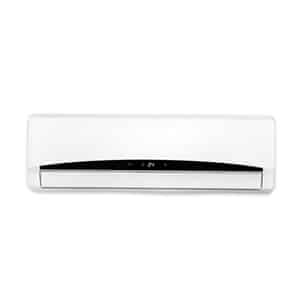Live in Canada and Have Never Heard of a “Heat Pump”? That’s Not Surprising!
Heat pump technology has been around since the mid-1800s, but they’re more commonly used in Europe and the southern United States.
Heat pumps work using a very simple principle of thermodynamics: Make a region colder than another and heat energy will always flow into the colder area.
This is the principle under which the majority of air conditioners work—whether freestanding units, forced air, or otherwise. Yet, traditional air conditioners generally only move heat in one direction—out. In contrast, heat pumps can effectively pump heat both out and in. This means that during the summer months, any standard heat pump can operate like a traditional air conditioner—cooling the home by removing heat and releasing it outside. Then, during cooler months, you can reverse the heat pump’s process, to extract heat from the air outside of your home and pull it inside in order to increase the temperature in your dwelling.
This process works effectively in moderately cold weather – think Canadian autumn and spring. However, once the outside temperature drops below a certain threshold, heat pumps won’t work as efficiently—they can develop a thick layer of frost on their condenser coils, which slows the process of pulling heat from the outside air and can also impede airflow. At a certain point, if you’ve got a furnace as a heating back-up with the appropriate controls, your furnace will likely kick in and take over heating your home.
Learn more about how heat pumps work in The Cool Science Behind Heat Pumps.
5 Benefits of Heat Pumps
-
- All-purpose, multi-condition comfort: A heat pump can help keep your home feeling comfortable even in the unpredictable spring and fall seasons.
- Lower your energy consumption: Because heat pumps move heat rather than creating it, they use significantly less energy than ordinary electric heating.
- Shield yourself from unpredictable energy costs: Because heat pumps work off of electricity, you can choose to use this energy-saving device in lieu of other equipment that runs off of natural gas.
- Be more eco-conscious: In areas with clean electricity, heat pumps produce lower CO2 emissions than a furnace that burns natural gas, which also reduces your dependence on fossil fuels. Decrease your carbon footprint without decreasing your home comfort!
- Easy integration into your home: Stand-alone models can be mounted on the wall or ceiling, while central heat pumps can be mounted alongside your existing forced air HVAC system and can use the same ductwork to distribute air throughout your home.
See a heat pump in your heating and cooling future? Or maybe you just want to know more about your HVAC options. Either way, you can Call on Reliance™ for industry leading expertise, design and installation home heating and cooling systems.
Visit our Heat Pump Resources page to learn more about heat pumps!
Read Next: Canada: Keeping it Green and Clean







